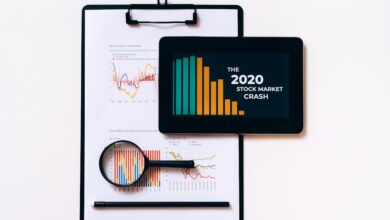Weathering the Storm: Understanding Economic Recessions and Strategies for Resilience

In an unpredictable economic landscape, understanding the nuances of recessions becomes increasingly vital for individuals, businesses, and policymakers alike. As historical patterns show, economic downturns are often preceded by a series of early warning signs, which, if recognized promptly, can provide crucial insights into impending challenges. This article delves into the early indicators of a recession, examining how these downturns affect various sectors of the economy, from retail to manufacturing. We will explore strategic investment approaches during challenging times, the essential role of government stimulus in mitigating the impacts of recessions, and the shifts in consumer behavior that often accompany economic decline. Additionally, we will assess the ramifications of recessions on global trade and supply chains, drawing lessons from past economic crises that remain relevant today. Finally, we will outline practical strategies for businesses to prepare for and navigate through recessions, ensuring resilience in an ever-changing economic environment.
- 1. Recognizing the Red Flags: Early Warning Signs of an Economic Recession
- 2. Navigating Turbulent Waters: Strategies for Investing During Economic Downturns
- 3. Government’s Safety Net: The Role of Stimulus in Cushioning Recession Impact
1. Recognizing the Red Flags: Early Warning Signs of an Economic Recession
Recognizing early warning signs of an economic recession is crucial for investors, businesses, and policymakers alike. Several key indicators can signal an impending downturn, allowing stakeholders to prepare and respond accordingly.
One of the most commonly cited indicators is a decline in gross domestic product (GDP) over two consecutive quarters. This decline often reflects reduced economic activity and can be accompanied by decreased consumer spending, which accounts for a significant portion of GDP. Additionally, rising unemployment rates can serve as a warning sign; when businesses anticipate a slowdown, they may begin to lay off workers, leading to decreased consumer confidence and spending.
Another important indicator is the behavior of the stock market. A sustained downturn or heightened volatility in stock prices can reflect investor concerns about future economic performance. Furthermore, yield curve inversion—when short-term interest rates exceed long-term rates—has historically been a reliable predictor of recessions, as it suggests that investors expect slower growth in the future.
Changes in consumer sentiment, often measured by surveys, can also provide insights into economic health. A decline in consumer confidence typically leads to reduced spending, as households become more cautious about their finances. Additionally, an increase in bankruptcies and loan defaults can indicate financial distress among consumers and businesses, further signaling economic troubles ahead.
Lastly, monitoring business investments can reveal early signs of a recession. A slowdown in capital expenditures often indicates that companies are bracing for less favorable economic conditions, which can further exacerbate the downturn as reduced investment hampers economic growth.
By keeping an eye on these red flags, stakeholders can better understand the economic landscape and take proactive measures to mitigate potential impacts.
2. Navigating Turbulent Waters: Strategies for Investing During Economic Downturns
Investing during economic downturns requires a strategic approach, as market volatility can create both challenges and opportunities. One of the primary strategies is to focus on defensive stocks—companies that provide essential goods and services, such as utilities, healthcare, and consumer staples. These sectors typically exhibit more stability during recessions, as demand for their products remains relatively constant regardless of economic conditions.
Another effective strategy is to adopt a diversified investment portfolio. By spreading investments across various asset classes, including stocks, bonds, and commodities, investors can mitigate risks associated with downturns. This diversification helps protect against significant losses in any one sector and can provide more balanced returns.
Value investing can also be a prudent approach during recessions. This strategy involves identifying undervalued companies whose stock prices may have fallen due to broader market fears rather than company-specific issues. Investing in such companies can yield substantial returns when the economy recovers, as these stocks often rebound faster than their more stable counterparts.
Investors should also consider increasing their allocation to fixed-income securities, such as government bonds, which tend to perform well in uncertain economic environments. These investments provide a reliable income stream and typically exhibit less volatility compared to equities.
Additionally, maintaining a cash reserve can be advantageous. Having liquidity allows investors to take advantage of buying opportunities as asset prices decline. This approach not only helps in capitalizing on market dips but also provides a safety net during turbulent times.
Finally, staying informed and adaptable is crucial. Monitoring economic indicators and market trends can help investors make timely decisions. Engaging with financial advisors or utilizing research tools can also assist in navigating the complexities of investing during a recession, ensuring that strategies remain aligned with changing market conditions.
3. Government’s Safety Net: The Role of Stimulus in Cushioning Recession Impact
During economic downturns, government stimulus plays a crucial role in cushioning the impact of recessions on individuals and businesses. Stimulus measures, which can include direct financial aid, tax relief, and increased public spending, aim to stabilize the economy by boosting demand and providing a safety net for those affected by rising unemployment and declining incomes.
One of the primary mechanisms of stimulus is direct financial assistance to consumers, such as stimulus checks or unemployment benefits. These payments help maintain consumer spending, which is vital for economic recovery, as consumer expenditures account for a significant portion of GDP. By putting money directly into the hands of consumers, governments can encourage spending on essential goods and services, thereby supporting businesses and preserving jobs.
In addition to direct assistance, governments may also invest in infrastructure projects and other public services to create jobs and stimulate economic activity. This not only provides immediate employment opportunities but can also lead to long-term benefits by enhancing the overall productivity of the economy. For example, investment in transportation and communication infrastructure can improve supply chains and lower costs for businesses.
Moreover, central banks often complement government stimulus efforts by lowering interest rates and implementing quantitative easing. These monetary policy tools aim to reduce borrowing costs, making it easier for businesses to invest and consumers to finance large purchases, such as homes and cars. By facilitating access to credit, central banks can help maintain economic momentum even during challenging times.
However, the effectiveness of stimulus measures can vary based on the severity and nature of the recession. In some cases, stimulus may not be enough to counteract deep-rooted issues, such as structural unemployment or significant declines in consumer confidence. Additionally, the timing and scale of stimulus efforts are critical; delayed or insufficient responses can prolong economic downturns and hinder recovery.
Ultimately, while government stimulus serves as a vital tool for mitigating the effects of recessions, it is most effective when combined with comprehensive economic policies that address the underlying causes of economic instability. By understanding the role of stimulus in recessionary contexts, policymakers can better prepare for future downturns and work toward more resilient economic systems.
In conclusion, understanding the dynamics of economic recessions is crucial for individuals, businesses, and policymakers alike. By recognizing early warning signs, such as declining consumer confidence and rising unemployment rates, stakeholders can better prepare for potential downturns. The impact of recessions is multifaceted, affecting various sectors differently, from manufacturing to services, and highlighting the need for tailored investment strategies that prioritize resilience.
Government stimulus plays a vital role in mitigating the adverse effects of recessions, providing a safety net that can help stabilize the economy and support recovery efforts. Simultaneously, shifts in consumer behavior during economic downturns underscore the importance of adaptability for businesses aiming to survive and thrive in challenging times.
The global nature of trade and supply chains means that recessions can have far-reaching implications, emphasizing the interconnectedness of economies worldwide. Learning from past recessions equips us with valuable insights, reinforcing the importance of proactive measures in both personal finance and corporate strategy.
Ultimately, businesses that prioritize preparation and adaptability are more likely to weather economic storms successfully. By developing robust contingency plans, maintaining financial flexibility, and staying informed about market trends, organizations can emerge stronger from recessions, ready to seize new opportunities for growth. As we navigate these uncertain economic landscapes, the lessons learned today will undoubtedly shape our response to future challenges.





